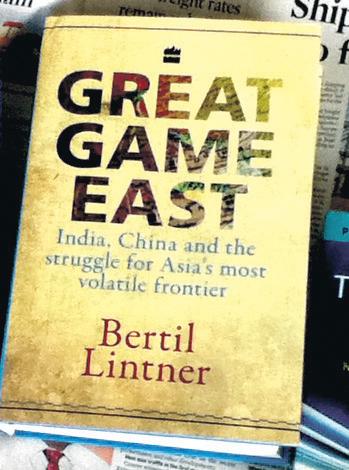
2 minute read
Great Game East
from 2012-12 Sydney (1)
by Indian Link
A unique novel tackles the global, political and social importance of a beleaguered country
BY CHITRA SudARSHAN

In the old colonial days, the ‘Great Game’ was a reference to the rivalry between Russia and the British colonialists in India, over Afghanistan. Later, the ‘New Great Game’ was the moniker given to the conflict between the Western powers and Russia and China over Central Asia’s oil and natural resources. Across the Himalayas, in the east, another great game has been on for some time now between the two Asian giants – India and China. The fight began over Tibet and now includes Northeast India, Myanmar, Bangladesh and the Indian Ocean –one that will significantly impact the course of global politics, according to Bertil Lintner, and he calls it the ‘Great Game East’. Lintner has even devoted one chapter to IndoBangladesh relations in his book.
Strategically located at the crossroads of the Indian subcontinent, China and Southeast Asia, the north-eastern states of India and the continuing armed strife in that sector hold the key to understanding the true complexity of the hostilities and political ambitions that Asia’s two giants harbour. In the Great Game East: India, China and the Struggle for Asia’s Most Volatile Frontier, (Harper Collins, India) Bertil Lintner – acknowledged as one of the foremost experts on insurgencies in the region – unpacks the layers and layers of complex political intrigues and spy networks that define the Great Game East, and looks at the geopolitics of that region. The defining rivalry is the India-China one, which saw a border war in 1962, and an uneasy peace since. Spies and agents from both countries have been stirring up trouble in the volatile frontier areas all these years. Besides, intelligence agencies of various other countries (the United States and Pakistan, among them) have also been keeping a sharp eye on the developments in the region.

Lintner believes that at the core of China’s covert interference in the region is the Indian Ocean which the country wants to penetrate for strategic gains, without India’s interference.
China’s role in north-eastern
India is not to create, but ‘maintain instability’ because it wants to keep India out of Myanmar, says Bertil Lintner. The intricate net of intrigues has kept the game going, the writer says.
“In 1950, China invaded Tibet after which the Americans began to support the cause of an independent Tibet. In 1959, the Dalai Lama fled to India and China was angry. In a few years, China attacked India resulting in the border war of 1962 and by the mid1960s, China decided to support the rebel movement in the northeast. Pakistan was also interested... Difficult games are being played in
China’s role in north-eastern India is not to create, but ‘maintain instability’ because it wants to keep India out of Myanmar, says Bertil Lintner the region,” says Lintner. Myanmar with its ethnic groups along the border was in the crosshairs. Lintner says, “It is difficult for Myanmar to lessen its dependence on China; they can’t do it. China will always be there... As for Myanmar’s ethnic conflicts, they will always be there. These conflicts have existed for hundreds of years - starting with Myanmar’s ancient warrior kings waging their wars against the non-Myanmarese nationalities and continuing to this day - and are not likely to go away any time soon”.
Lintner, who is recognised as an expert on Myanmarese issues as well as on South Asia, was one of the first outsiders to reach Myanmar’s isolated northern-held rebel areas; and reach China from India’s northeast after a 2,275-km overland trek in 1985. Lintner has been the FEER correspondent for Southeast Asia for 20 years, and has written several books on Myanmar, the Golden Triangle, South East Asia, China and Korea. This book needed to be written – as few comprehend or appreciate the myriad of complexities or the significance of that region better than Lintner. The book has an entire chapter on the relationship between Assam and Bangladesh, and it will surprise the reader: the massive migration from Bangladesh and the conflicting separatist movements and the struggle for land. This is a mustread for anyone who wishes to gain an understanding of the political future of a continent, or the world.












